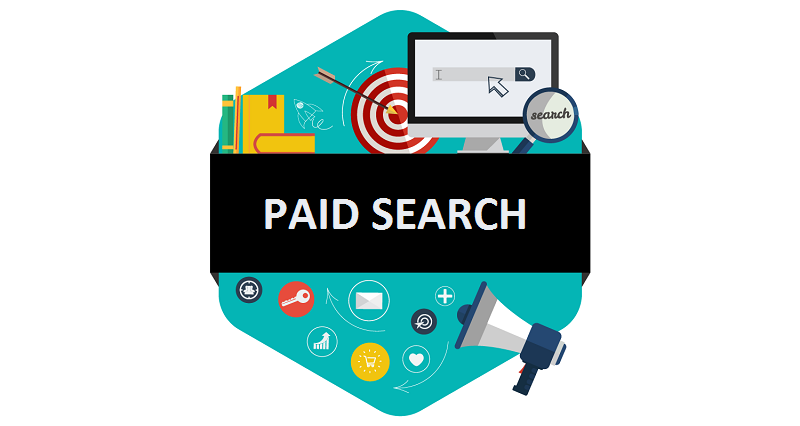Targeting the right audience with paid search is essential for maximizing the effectiveness of your advertising campaigns. By reaching the people most likely to be interested in your products or services, you can improve ad performance, increase conversions, and get the best return on your investment (ROI). Here’s how to effectively target audiences with paid search.

1. Define Your Target Audience
Understand Your Audience
- Demographics: Start by defining your target audience’s demographics, including age, gender, income level, and education. This helps you tailor your ads to specific groups.
- Interests and Behaviors: Identify your audience’s interests, behaviors, and purchasing habits. This information helps you create ads that resonate with their preferences and needs.
Create Buyer Personas
- Detailed Profiles: Develop detailed buyer personas that represent your ideal customers. Include information such as their goals, challenges, and motivations. This guides your targeting strategy and ad messaging.
- Segmentation: Segment your audience based on different criteria, such as demographics, interests, and purchase intent. This allows for more precise targeting and personalized ad experiences.
2. Utilize Keyword Targeting
Research Keywords
- Keyword Tools: Use keyword research tools like Google Keyword Planner to identify relevant keywords for your industry. Focus on keywords that match your audience’s search intent.
- Long-Tail Keywords: Incorporate long-tail keywords that are more specific and less competitive. These keywords often have higher intent and can attract more qualified leads.
Optimize Keyword Lists
- Negative Keywords: Use negative keywords to exclude irrelevant searches and prevent your ads from showing up for terms that don’t align with your target audience. This helps improve ad relevance and reduces wasted spend.
- Keyword Match Types: Experiment with different keyword match types—broad match, phrase match, and exact match—to control how closely a search query needs to match your keywords. Adjust based on performance and targeting needs.
3. Leverage Audience Targeting Options
Demographic Targeting
- Age and Gender: Use demographic targeting to reach users based on age and gender. This helps ensure that your ads are shown to the segments most likely to be interested in your offerings.
- Household Income: Target users based on household income to tailor your ads to different income brackets, allowing for more relevant and effective messaging.
Geographic Targeting
- Location Targeting: Use geographic targeting to show your ads to users in specific locations. This can be as broad as entire countries or as specific as cities or zip codes.
- Local Targeting: For businesses with physical locations, utilize local targeting to attract customers in proximity. This helps drive foot traffic and increase local visibility.
Behavioral Targeting
- Interest Categories: Target users based on their interests and behaviors. Platforms like Google Ads and social media networks allow you to target users who have shown interest in specific topics or products.
- Remarketing: Implement remarketing strategies to re-engage users who have previously visited your website or interacted with your brand. This helps nurture leads and encourages return visits.
4. Employ Ad Scheduling and Dayparting
Schedule Ads for Optimal Times
- Ad Scheduling: Use ad scheduling to display your ads during specific times of the day or days of the week when your target audience is most active. This helps improve ad visibility and engagement.
- Dayparting: Analyze performance data to determine the best times to show your ads. Adjust your ad schedule based on when your audience is most likely to convert.
Adjust Bids Based on Time
- Bid Adjustments: Adjust your bids based on the time of day or day of the week. Increase bids during high-performance times and decrease them during less effective periods to optimize your budget.
5. Utilize Custom Audiences and Lookalike Audiences
Custom Audiences
- Create Custom Lists: Use custom audiences to target users based on specific criteria, such as past website visitors, email subscribers, or customer lists. This allows for highly relevant and personalized ads.
- Engagement Data: Leverage data from your website or app to create custom audiences. Target users who have engaged with your content or performed specific actions.
Lookalike Audiences
- Expand Reach: Create lookalike audiences based on your existing customer base. Platforms like Facebook and Google allow you to target new users who share similar characteristics with your best customers.
- Refine Targeting: Use lookalike audiences to reach potential customers who are likely to be interested in your products or services, based on the behavior and traits of your current audience.
6. Optimize Ad Creative and Messaging
Tailor Ad Copy
- Relevance: Ensure that your ad copy is relevant to the targeted audience. Address their needs, pain points, and interests to capture their attention and drive engagement.
- Personalization: Use dynamic keyword insertion and personalized ad copy to make your ads more appealing and relevant to each audience segment.
Test and Iterate
- A/B Testing: Conduct A/B tests on different ad creatives, headlines, and calls to action. Analyze the results to determine which variations perform best with your target audience.
- Continuous Improvement: Regularly review and refine your ad copy based on performance data and audience feedback. This helps you continually improve your targeting and ad effectiveness.
7. Monitor Performance and Adjust
Analyze Campaign Data
- Performance Metrics: Track key performance metrics such as CTR, conversion rate, and cost per conversion. Analyze this data to evaluate the effectiveness of your targeting strategies.
- Adjust Targeting: Use performance insights to adjust your targeting criteria, keywords, and ad creatives. Make data-driven decisions to optimize your campaigns and improve ROI.
Use Reporting Tools
- Analytics Platforms: Utilize reporting tools like Google Analytics and Google Ads reports to monitor campaign performance and audience engagement. These tools provide valuable insights into how well your targeting strategies are working.
- Custom Reports: Create custom reports to focus on specific aspects of your targeting, such as audience segments, geographic performance, and keyword effectiveness.
Conclusion
Effective audience targeting with paid search requires a combination of strategic planning, precise targeting, and ongoing optimization. By defining your target audience, utilizing keyword targeting, leveraging audience options, and optimizing ad creatives, you can reach the right people and achieve better results from your campaigns. Regularly monitor performance and adjust your strategies based on data to ensure that you maximize your ROI and drive successful outcomes with your paid search efforts.




